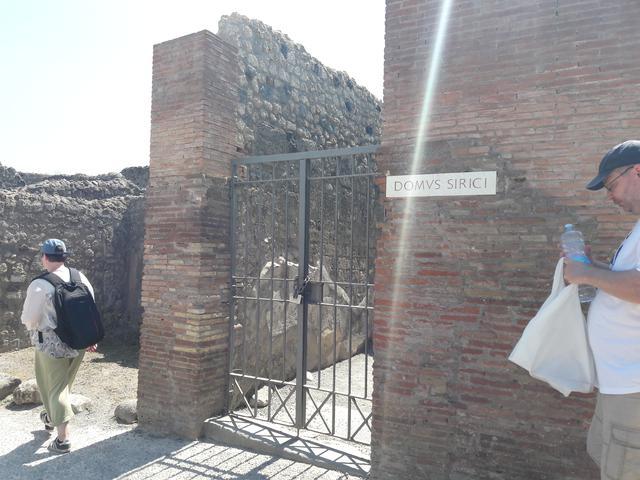sirico's house

Sirico's House, located in the ancient city of Pompeii, is a fascinating archaeological site that offers a glimpse into the daily life of the wealthy residents of the city before it was buried by the eruption of Mount Vesuvius in 79 AD. The house is a unique example of Roman architecture, showcasing the luxurious lifestyle of its owner, Publio Védio Sirico, a prominent figure in Pompeii's political and commercial circles. The merging of two houses in the 1st century BC resulted in the creation of this grand residence, with entrances on via Stabiana and the Lupanare alley.
One of the most striking features of Sirico's House is the exedra, a beautifully decorated space where guests were entertained on plush sofas surrounded by exquisite marble floors and frescoes depicting mythological scenes inspired by the Trojan War. These intricate frescoes, some of which are now on display at the National Archaeological Museum of Naples, provide valuable insights into the artistic and cultural tastes of the time. The attention to detail in the decorations of the house reflects the wealth and status of its owner, who spared no expense in creating a lavish and welcoming environment for his guests.
The discovery of a bronze seal bearing Publio Védio Sirico's name has allowed archaeologists to identify the last owner of the house, shedding light on his role in Pompeii's social hierarchy. Sirico's House served as a gathering place for his followers, who were greeted by the auspicious inscription "SALVE LUCRU" (Welcome, money) on the entrance floor. This inscription not only reflects Sirico's prosperity but also hints at the importance of commerce in Pompeii's economy. The house stands as a testament to the city's vibrant cultural life and its interconnectedness with the wider Roman world.
Visitors to Sirico's House can explore its well-preserved rooms, including the exedra, atrium, and living quarters, gaining a deeper understanding of the architectural and artistic achievements of the ancient Romans. The meticulous restoration work carried out after the eruption has ensured that the house remains a captivating destination for tourists and history enthusiasts alike. As you wander through the corridors and courtyards of Sirico's House, you can imagine the bustling activity that once filled its rooms and the echoes of conversations that reverberated within its walls. This archaeological gem offers a window into the past, allowing visitors to connect with the rich history of Pompeii and the people who called it home.
© ChatGPT 3.5